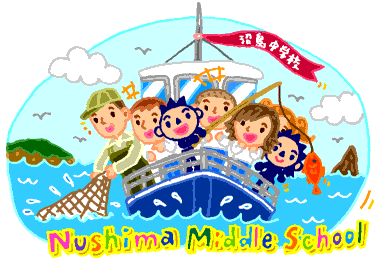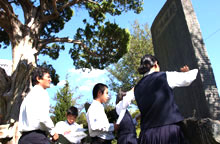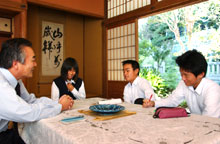Nushima Middle School
Getting to Know Nushima
Although the waters around Nushima contain some of the best fishing spots in Hyogo Prefecture, not many of Nushima's young people want to work in the fishing industry. Most of them want to leave the island in order to look for a job after graduating from high school. But the students of Nushima Middle School are fortunate to live in a hometown with an abundance of nature and history. Some will leave the island in the future and some will stay, but since they have grown up there, the school thought they should know more about Nushima's unique traditional culture. So five years ago it began a program of events for this purpose, called "Getting to Know Nushima." Under this program the kids themselves research various aspects of the island's heritage. Up to now, students have done such work as collecting words from Nushima's unique dialect and studying rare plants. This school year all of the students participated in one of four groups and took on a project of their own. The four groups were the School Research Group, the Legend of Nushima Castle Group, the Natural History Research Group, and the Hunting for Folk Tales Group.
The School Research Group examined how Nushima Middle School looked 30 to 40 years ago, collected data from a previous principal and alumni, and studied how the school has changed over the years. The Legend of Nushima Castle Group read historical documents concerning the legend that there was a castle on top of a hill there several hundred years ago. The Hunting for Folk Tales Group recorded some of the folk tales that have been passed down from long ago on Nushima. The Natural History Research Group looked at the composition of the island from a geological standpoint and studied the lifestyles of the people who lived on Nushima in the Jomon period (10,000 BC-300 BC). Together with their teacher, the students in this group also tried making Jomon-style pottery the way it was made in the Jomon period, without using a potter's wheel. After mixing clay and sand and shaping it by hand, the students fired the pottery using a simple wood fire. One student in the group said: "When we fire the pottery, if it gets hot too quickly, it might crack. So we began with the pots 10 centimeters (4 inches) away from the fire and gradually moved them closer. We fired the pottery between 30 and 40 minutes and then let it cool for 10 or 20 minutes. It was a lot of fun."    Send your comments and questions here. (nushima@jcic.or.jp) |




